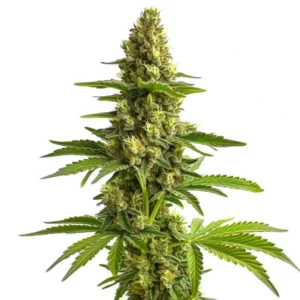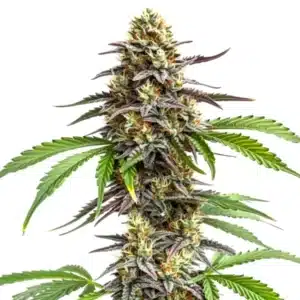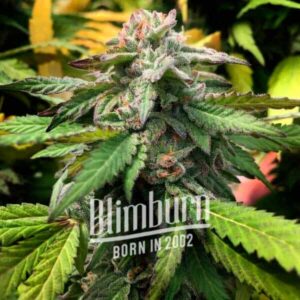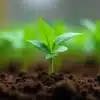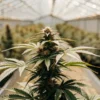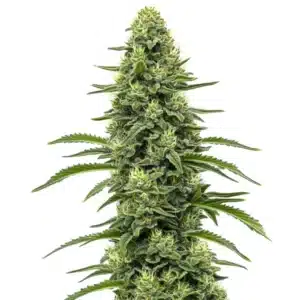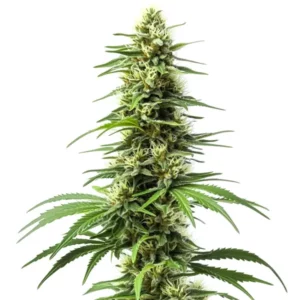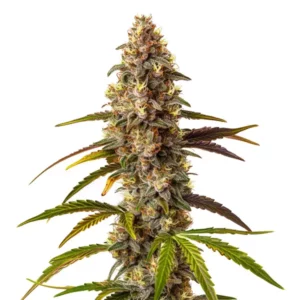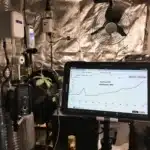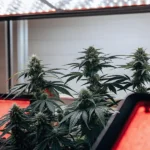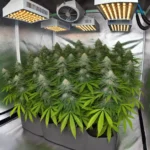
How to Boost Yield Using Light Quality
Maximizing your cannabis harvest involves more than just watering and feeding your plants. Light quality plays a crucial part. First-time growers might overlook it, but seasoned growers know its power. Learning how to boost yield using light quality can make a significant difference in your crop’s success.
Light isn’t just about brightness. Spectrum, intensity, and duration all matter. The effects of light spectrum on plant growth are profound. Different wavelengths trigger various plant responses. Red, blue, and far-red lights each have unique roles. Knowing this can be the key to optimizing crop yield with LED lighting.
Recommended Strains
GG4
|
|
THC | 27% (High) |
|
|
Type | Feminized |
|
|
Yield | High |
|
|
Phenotype | 40% Indica / 60% Sativa |
Bruce Banner #3
|
|
THC | 20% - 29% (High) |
|
|
Type | Feminized |
|
|
Yield | Medium |
|
|
Phenotype | 50% Indica / 50% Sativa |
LED lights often come as a top choice for many growers. They offer energy efficiency and spectrum control. When increasing agricultural yield through light manipulation, LEDs provide the flexibility needed. They’re adaptable and can be fine-tuned to match your plant’s specific needs. A perfect example is their use in enhancing plant production using light quality.
Light Spectrums and Their Impact
Light spectrum refers to the range of light wavelengths. Each color in the spectrum affects plants differently. Blue light is crucial during vegetative growth. It encourages strong, healthy leaves. Red light, on the other hand, is vital during flowering. It promotes budding and fruiting.
Full-spectrum LED lights offer the best of both worlds. They combine the benefits of full-spectrum light for crop yield. This kind of lighting mimics natural sunlight. It ensures plants receive a balanced light diet, crucial for robust growth and high yields. Full-spectrum lights are particularly beneficial for cannabis strains like GG4 from Blimburn Seeds.
The effects of light spectrum on plant growth extend beyond just color. The right balance can influence root development and overall plant structure. For instance, far-red light can encourage stem elongation and is useful in certain growth stages. Knowing these nuances is essential for anyone looking to boost yield using light quality.
Incorporating UV light into your spectrum can also be beneficial. Although UV light is often overlooked, it can enhance the production of certain plant compounds. This addition can lead to increased potency and resilience, making your plants not only more productive but also healthier. Experimenting with these spectrums can provide insights into optimizing crop yield with LED lighting.
Promos & Deals
LED Lighting: A Game Changer
LED lights are revolutionizing indoor growing. They’re efficient and customizable. When you’re optimizing crop yield with LED lighting, consider their adjustability. You can tweak the light spectrum to match each growth phase. This adaptability is a game-changer for many growers.
LEDs also save on electricity bills. They consume less power than traditional lights. This makes them cost-effective in the long run. Investing in quality LEDs can boost your yield significantly. Consider experimenting with strains like Bruce Banner 3 from Blimburn Seeds to see the difference.
Beyond energy savings, LEDs offer a longer lifespan compared to other lighting options. This durability reduces the frequency of replacements and maintenance, providing a reliable lighting solution. The initial investment in LEDs is often offset by these long-term benefits, making them an attractive choice for serious growers.
The ability to control the intensity and duration of light with LEDs is another advantage. This control allows for precise manipulation of growth cycles, enabling growers to simulate different environmental conditions. This capability is particularly useful when increasing agricultural yield through light manipulation indoors.
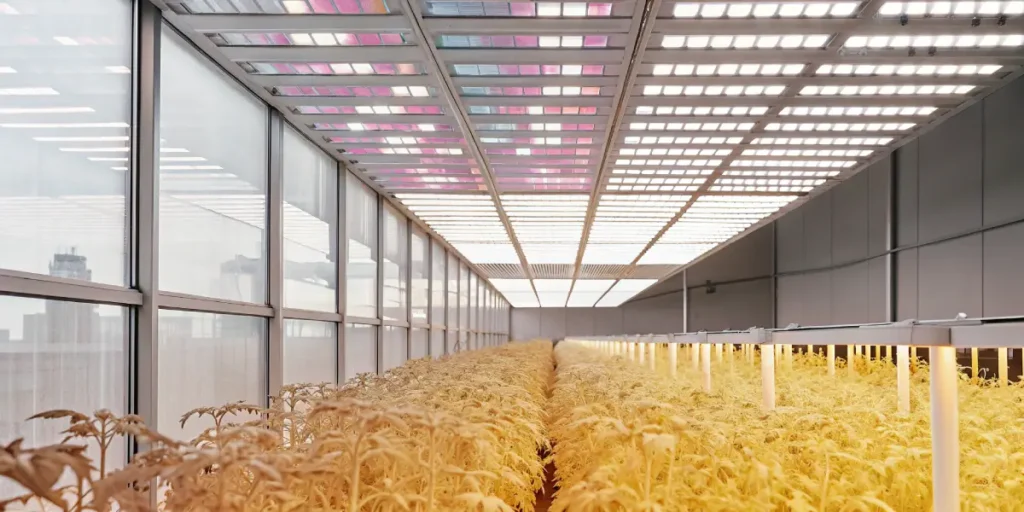
Practical Tips for Using Light Quality
Start by assessing your grow space. Determine the amount of natural light available. Then, supplement it with artificial lighting. Position your lights at the right height. Too close, and they can burn your plants. Too far, and your plants might stretch unnecessarily.
Monitor your plants’ responses closely. Look for signs of light stress, such as leaf curling or discoloration. Adjust the spectrum and intensity as needed. This hands-on approach will help you master how to boost yield using light quality.
Consider using a timer to automate light cycles. Consistency is key, and a timer ensures your plants receive the right amount of light each day without manual intervention. This tool is invaluable in maintaining regular light and dark periods, which are crucial for optimal plant development.
Reflective materials can enhance your lighting setup by maximizing light distribution. Line your grow space with reflective surfaces to ensure even coverage. This simple addition can significantly improve light efficiency, ensuring all parts of your plants receive adequate illumination.
Common Mistakes and How to Avoid Them
One common mistake is ignoring light spectrum altogether. Many growers focus solely on intensity. Remember, spectrum is just as important. Use full-spectrum lights to cover all your bases.
Another mistake is improper light positioning. Ensure your lights are evenly distributed. Uneven lighting can lead to inconsistent growth. Use reflective materials to maximize light distribution.
Overlooking the importance of light duration can also be detrimental. Different growth stages require specific light cycles; failure to adjust these can impede progress. Ensure you adapt the light cycle according to the growth phase to promote healthy development and enhance plant production using light quality.
Not keeping up with technology advancements is another pitfall. Lighting technology evolves rapidly, and staying informed about new products and techniques can provide a competitive edge. Regularly updating your knowledge and equipment can help in optimizing crop yield with LED lighting.
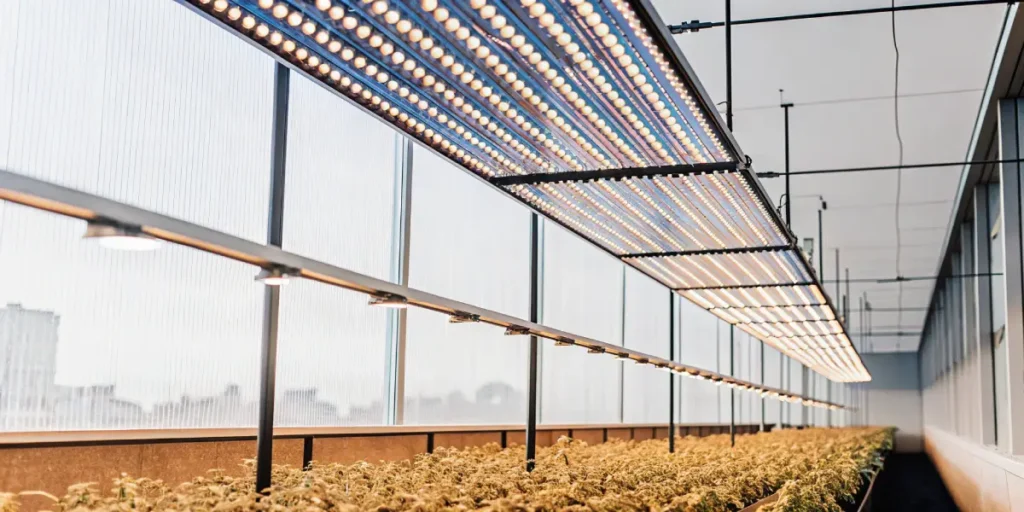
FAQs
What is the best light spectrum for cannabis growth?
The best light spectrum varies by growth stage. During the vegetative phase, blue light is crucial. It encourages leaf and stem development. In the flowering phase, red light becomes more important. It stimulates bud formation and growth. Full-spectrum lights offer the best balance for both stages.
Using full-spectrum lights ensures your plants receive a balanced light diet. This mimics natural sunlight, which is ideal for cannabis. Strains like GG4 from Blimburn Seeds thrive under full-spectrum lighting. They benefit from the combination of blue and red wavelengths.
Besides to blue and red, incorporating far-red and UV spectrums can further enhance plant growth. These additional wavelengths can stimulate different plant responses, promoting more robust growth and a higher yield. Full-spectrum lighting allows for the inclusion of these beneficial spectrums.
Different strains may have varying light spectrum preferences. Experimenting with different spectrums can help you find the optimal lighting conditions for your specific strains. This experimentation is a key part of learning how to boost yield using light quality effectively.
How does light quality impact cannabis yield?
Light quality directly affects cannabis yield. High-quality light ensures better photosynthesis. This leads to healthier plants and larger yields. Poor light quality can stunt growth and reduce yield. It’s essential to provide your plants with the right spectrum and intensity.
Optimizing crop yield with LED lighting involves more than just intensity. Ensure your lights offer the right spectrum for each growth stage. This tailored approach significantly boosts yield. Experiment with strains like Bruce Banner 3 from Blimburn Seeds to see the impact.
Light quality also influences the morphology of cannabis plants. Proper lighting can lead to denser buds and more compact growth, which is desirable for many growers. This structural impact is another reason why focusing on light quality is crucial for yield improvement.
Beyond yield, light quality can affect the flavor and aroma profiles of cannabis. High-quality light promotes healthy terpene production, enhancing the overall sensory experience of your harvest. This is yet another facet of how to boost yield using light quality.
Why are LEDs preferred over other lighting options?
LEDs are preferred for several reasons. They are energy-efficient and customizable. You can adjust the light spectrum to suit each growth stage. This flexibility is crucial for maximizing yield. LEDs also produce less heat, reducing the risk of plant stress.
Cost-effectiveness is another advantage. LEDs consume less electricity, saving on bills. Their longevity also means fewer replacements. For many growers, the upfront investment in LEDs pays off with improved yields. Strains like Strawberry Banana from Blimburn Seeds perform well under LED lighting.
The reduced heat output of LEDs also means less infrastructure is needed to manage grow room temperatures. This can lead to additional savings on cooling systems, further increasing the cost efficiency of LED setups. This aspect is particularly beneficial in climates where temperature control is challenging.
LEDs offer a sustainable choice for environmentally conscious growers. Their lower energy consumption reduces the carbon footprint of indoor growing operations. This eco-friendly aspect of LEDs aligns with the growing trend towards sustainable agricultural practices.
How can I tell if my cannabis plants are getting enough light?
Monitor your plants for signs of light stress. Healthy plants have vibrant green leaves. If leaves curl or discolor, they may be receiving too much light. Conversely, if plants are stretching, they may need more light.
Adjust light distance and intensity accordingly. Use a light meter to measure light levels. This tool helps ensure your plants get the optimal amount of light. Regular checks and adjustments are key to enhancing plant production using light quality.
Observe the growth patterns of your plants. Consistent, even growth is a good indicator of adequate lighting. If you notice uneven growth or slowed development, it might be time to reevaluate your lighting setup. Keeping a growth journal can help track these changes effectively.
Consider the overall health and vigor of your plants. Robust, healthy growth often correlates with proper lighting conditions. If you’re achieving lush and dense foliage, it’s a good sign that your lighting is on point. This observation is part of the continuous learning process in increasing agricultural yield through light manipulation.
Can light quality improve cannabis potency?
Yes, light quality can influence cannabis potency. Proper lighting promotes better photosynthesis, leading to healthier plants. This can enhance cannabinoids and terpenes production. The right light quality is crucial for achieving potent cannabis.
Focus on providing full-spectrum light throughout your grow. This ensures plants receive all necessary wavelengths. Strains like GG4 and Bruce Banner 3 from Blimburn Seeds are known for their potency. They respond well to quality lighting conditions.
Light quality can also impact the overall resilience of cannabis plants. Plants receiving optimal light conditions tend to be more resistant to pests and diseases. This increased resilience can indirectly contribute to potency by allowing plants to focus energy on cannabinoid production.
Experimenting with light spectrums can lead to discoveries about which conditions maximize potency for your specific strains. This experimentation is a critical component of learning how to boost yield using light quality, providing insights that can elevate your cultivation practices.



